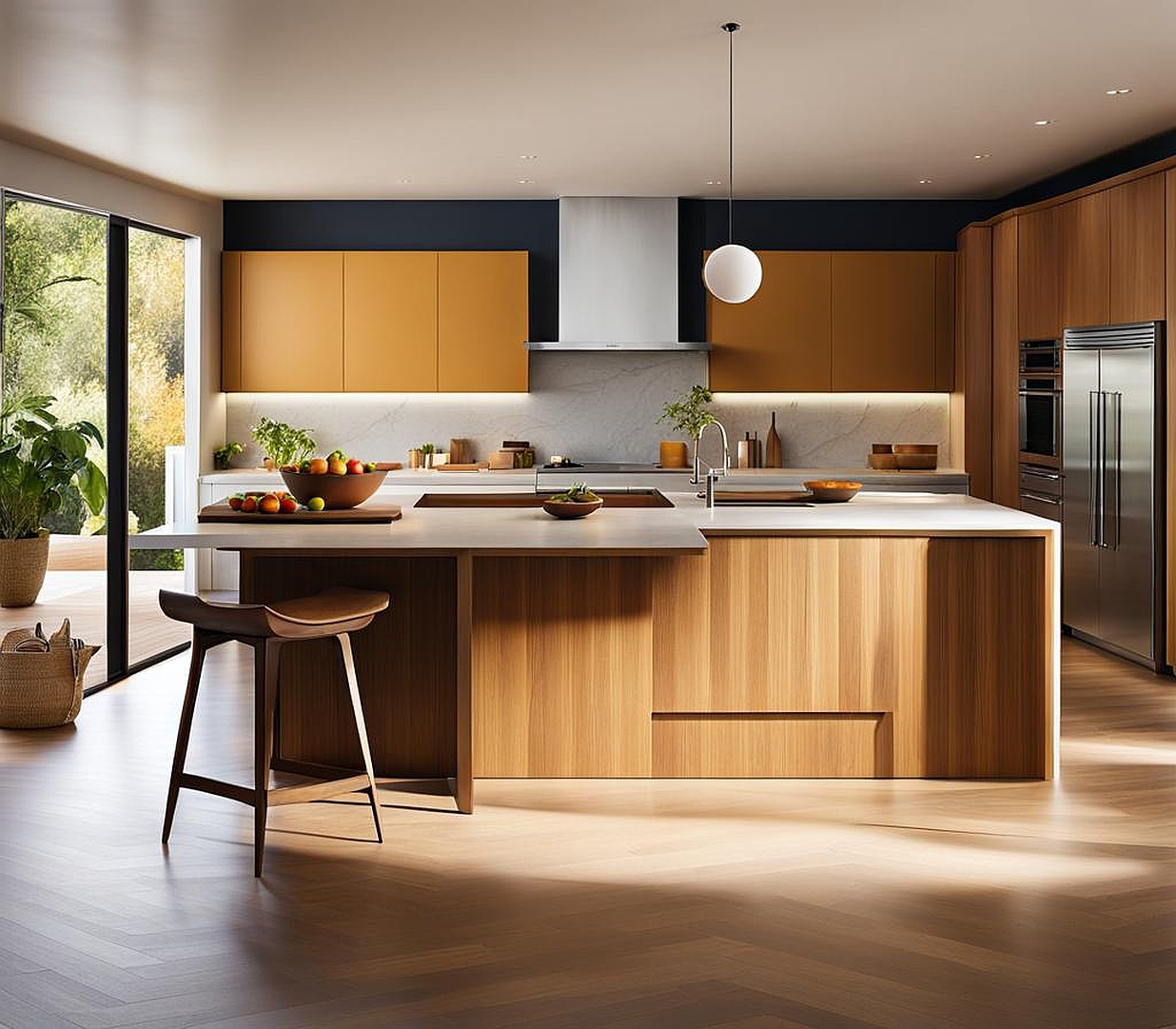A unique shaped island is a great way to bring nature’s charm to your kitchen. Organic kitchen island shapes are all about celebrating the natural curves, irregular forms, and free-flowing lines that effortlessly blend style and functionality. From rounded countertops to live-edge wood, these organic shapes offer a refreshing departure from traditional straight lines, infusing your cooking space with a sense of warmth and character.
Understanding Organic Kitchen Island Shapes
Organic shapes in kitchen design draw inspiration from the harmonious patterns found in nature. They evoke a sense of fluid movement and organic flow, creating a welcoming and inviting atmosphere. These shapes often feature curved lines, irregular forms, and asymmetrical silhouettes that add visual interest and dynamism to the space.

Beyond their aesthetic appeal, organic kitchen island shapes offer several practical benefits. The gentle curves and rounded edges provide a more ergonomic and user-friendly experience, reducing sharp corners that can be hazardous or uncomfortable. Moreover, the flowing lines promote seamless traffic flow, making it easier to navigate around the island and create a natural circulation pattern in your kitchen.
Popular Organic Kitchen Island Shapes
When it comes to organic kitchen island shapes, the possibilities are endless. Here are some of the most popular and captivating options: – Curved or rounded islands: These smooth, circular shapes exude a sense of softness and warmth, creating a cozy and inviting focal point in your kitchen. – Irregular or asymmetrical islands: Embracing the beauty of imperfection, these unconventional shapes add a unique and artistic touch to your cooking space. – Natural edge or live-edge islands: Crafted from solid wood slabs with the bark and edge intact, these islands celebrate the raw, natural beauty of the material, bringing the outdoors inside. – Oval or egg-shaped islands: Combining curves and gentle elongation, these shapes provide ample workspace while maintaining an organic flow.
Choosing the Right Organic Shape for Your Kitchen
When selecting an organic kitchen island shape, it’s crucial to consider your kitchen’s layout, size, and overall aesthetic. A curved island may work beautifully in an open-concept space, while an irregular or asymmetrical shape can add visual interest to a more confined area. Additionally, ensure that the chosen shape complements your kitchen’s design style, whether it’s modern, rustic, or somewhere in between.
For those seeking a modern organic kitchen design, consider blending curved or oval-shaped islands with eco-friendly materials like bamboo or recycled glass. On the other hand, if you’re aiming for a more rustic vibe, a natural edge or live-edge island crafted from reclaimed wood can create a stunning focal point that celebrates the beauty of nature.
Design Tips for Organic Kitchen Islands
To truly embrace the organic aesthetic, consider incorporating the following design tips: – Create a focal point: Let your uniquely shaped island be the star of the show by strategically positioning it as the centerpiece of your kitchen. – Maximize space: Curved or irregular designs can help optimize space utilization, providing ample workspace and storage solutions while promoting a smooth traffic flow. – Incorporate natural materials: Woods like oak, walnut, or maple, combined with stone countertops, can enhance the organic feel and create a warm, inviting atmosphere. – Integrate seating and storage: Organic islands offer the perfect opportunity to incorporate built-in seating or creative storage solutions, such as open shelving or hidden compartments.
Organic Kitchen Island Materials and Finishes
To truly embrace the organic aesthetic in your kitchen island, consider the following materials and finishes:
- Wood: Live-edge or natural edge wood slabs, reclaimed wood, or sustainable sources like bamboo can add warmth and character to your island.
- Stone: Natural materials like granite, quartz, or concrete can complement the organic shapes and textures, creating a harmonious blend of elements.
- Metal accents: Brushed, hammered, or patinated metal accents can add depth and interest, while still maintaining an organic feel.
- Eco-friendly finishes and sealants: Opt for low-VOC sealants and finishes to ensure your organic kitchen island is not only beautiful but also environmentally conscious.
Complementing Organic Islands with Other Design Elements
To create a cohesive and visually stunning space, consider complementing your organic kitchen island with other design elements that enhance the natural aesthetic: – Lighting: Pendant lights or under-cabinet lighting can highlight the unique shape and textures of your island, creating a warm and inviting ambiance. – Cabinetry: Curved cabinet doors or open shelving can echo the organic shapes of your island, creating a seamless and harmonious design. – Flooring: Natural hardwood or tile flooring can ground the space and complement the organic elements of your kitchen. – Backsplash: Stone, tile, or glass backsplashes can add depth and texture, while still allowing the organic island to take center stage.
If you’re seeking inspiration for your organic kitchen island design, consider the following ideas: – Modern organic kitchen island examples: Sleek, curved islands crafted from concrete or quartz, paired with minimalist cabinetry and metallic accents, can create a stunning contemporary look. – Rustic or natural-inspired kitchen island designs: Live-edge wood islands combined with exposed beams and natural stone elements can evoke a warm, farmhouse-inspired aesthetic. – Bespoke or custom-made organic kitchen islands: Work with a skilled craftsman to create a one-of-a-kind island that perfectly captures your vision and complements your kitchen’s unique character. – Creative ways to incorporate curves and irregular shapes: Explore innovative design solutions like curved banquette seating or asymmetrical shelving units that seamlessly integrate with your organic island shape.
Embrace the organic beauty of nature and let your creativity flow as you design a kitchen island that truly reflects your personal style and creates a warm, inviting space for culinary exploration.